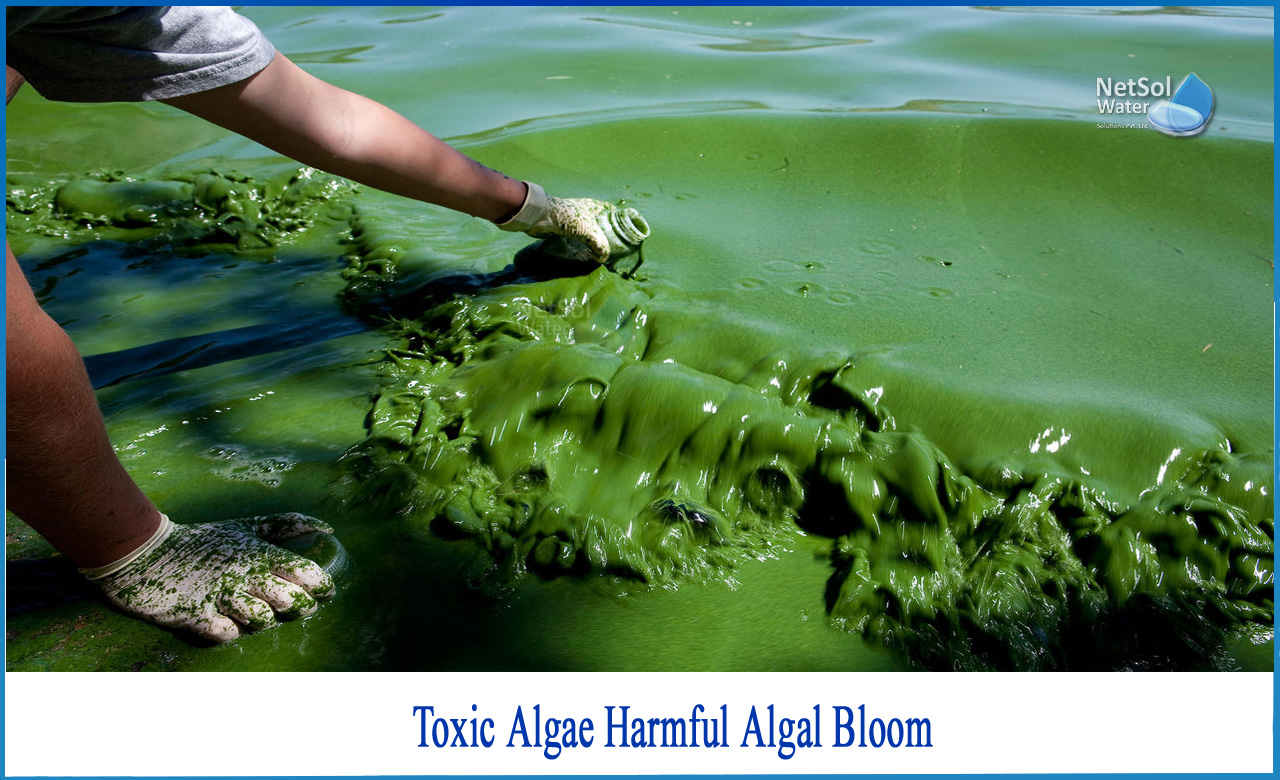How is algal bloom harmful?
A hazardous algal bloom (HAB) is made up of organisms that may significantly reduce oxygen levels in natural environments, killing life in both salt and fresh water. Some HABs are linked to toxins generated by algae. Blooms can persist anywhere from a few days to several months. After the bloom fades, the bacteria that breakdown the dead algae use even more oxygen, causing fish die-offs. When these low-oxygen zones cover a vast region for a lengthy period of time, neither fish nor vegetation can live.
Identification and description
HABs from cyanobacteria (blue-green algae) can appear as a foam, scum, or mat on or just below the water's surface, and their pigments can cause them to change colour. Blooms of cyanobacteria in freshwater lakes or rivers can seem brilliant green, with surface streaks that resemble floating paint. Cyanobacterial blooms are a worldwide issue.
Similarly, dinoflagellate-based red tides contain photosynthetic pigments that range in hue from green to brown to red.
The majority of blooms occur in warm, nutrient-rich seas. The detrimental impacts of such blooms are caused by the poisons they generate or by the use of oxygen in the water, which can result in fish die-offs. However, not all algal blooms create poisons; some just colour the water, emit a stinky stench, or impart a terrible taste to it. Unfortunately, because sample and microscopic study are necessary, it is not feasible to identify if a bloom is dangerous based just on looks.
In many circumstances, microscopy is insufficient to distinguish between hazardous and non-toxic populations; in these cases, techniques to test the toxin or identify whether the genes that cause toxin production are present can be used.
Types
There are three forms of phytoplankton that can produce harmful algal blooms:
1.Cyanobacteria
Cyanobacteria, sometimes known as "blue-green algae," create harmful algal blooms in freshwater lakes and rivers, as well as estuaries where rivers run into the ocean. Cyanobacteria are prokaryotic bacteria, not algae, which are eukaryotes.Some cyanobacteria, particularly the common species Microsystis, can create dangerous cyanotoxins which are hepatotoxins that attack the liver of mammals. Hepatoxins, as well as neurotoxins, cytotoxins, and endotoxins, can be produced by other species of cyanobacteria.
2.Red tides
The other species of algae include diatoms and dinoflagellates, which are found mostly in coastal settings such as ocean beaches or bays and can generate algal blooms known as red tides. Red tides are a natural phenomenon, but in many cases, particularly along coasts or in estuaries, they have been proven to be worsened by human-caused eutrophication and/or climate change.They can occur when particular quantities of warmer water, salinity, and nutrients are reached, which accelerates their growth.
3.Diatoms
Domoic acid, another neurotoxic produced by diatoms, can induce seizures in higher vertebrates including birds when it accumulates up the food chain. Domoic acid quickly accumulates in the bodies of mussels, sardines, and anchovies, and when consumed by sea lions, otters, cetaceans, birds, or humans, it can disrupt the neurological system, resulting in catastrophic injury or death.
Conclusion
HABs also cause harm by obstructing sunlight, which plants and algae utilize to photosynthesise, or by depleting the dissolved oxygen required by fish and other aquatic organisms, which can result in fish die-offs. When such oxygen-depleted water spreads across a vast region over a lengthy period of time, it can become hypoxic or even anoxic; these places are known as dead zones.
These dead zones can be caused by a variety of circumstances ranging from natural phenomena to purposeful human action, and they are not restricted to enormous volumes of fresh water such as the great lakes, but are equally prone to bodies of saline water.
Best water and wastewater treatment manufacturer in India: Netsol Water
Netsol Water is a significant water treatment firm in India, offering WTP, WWTP, STP, and ETP manufacture, among other services. We have made a mission to save the planet. The company creates equipment’s and is committed to providing practical solutions that help businesses flourish.
Netsol Water is committed to providing our valued customers with hands-on service, expert counselling, and training.



